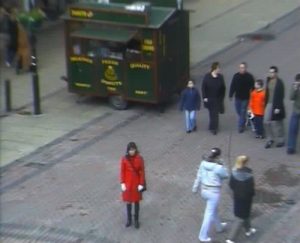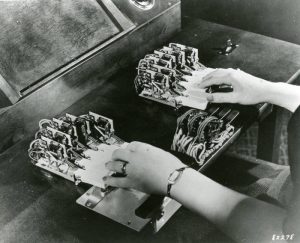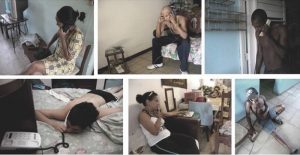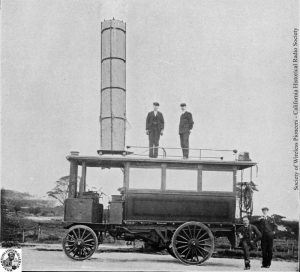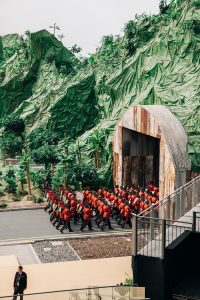I’m back from Asturias which was as lovely as ever. We even had real vegetable to eat this time. The LAboral Art and Industrial Creation Centre in Gijón was opening Banquete_nodos y redes, Interactions Between Art, Science, Technology and Society in Spain’s Digital Culture, an exhibition initiated by Karin Ohlenschläger and Luis Rico.
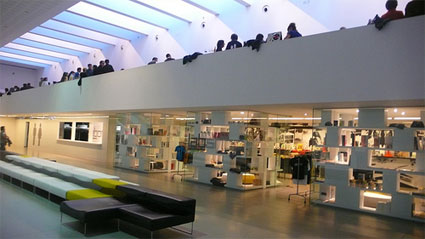 View of the LABoral shop and of the inauguration party right above it
View of the LABoral shop and of the inauguration party right above it
The press conference started with a string of surprising figures listed by LABoral’s Director Rosina Gómez-Baeza Tinturé. In its 14 months of activity, the centre -which has given itself the mission to foster the interaction between art, society and technology- has hosted the work of 261 creators (45 of them come from the region of Asturias), 54 workshops given by some 90 teachers to more than 3000 participants. Add to that many concerts, conferences, debates and other activities. Amazing, even for a space that covers more than 14.000 m². Which reminds me that it would be good to come back one day on the design and architecture of the centre. The public bathrooms only are worth the visit, i feel like stepping inside 2001: A Space Odyssey each time i enter there.
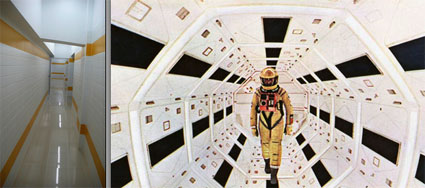 LABoral bathroom and a scene from 2001: A Space Odyssey
LABoral bathroom and a scene from 2001: A Space Odyssey
Banquete_nodos y redes presents more than 30 digital and interactive works that critically and creatively explore the notion of Network as a shared matrix, not just from a technological perspective but also from a socio-cultural perspective. I’ll be back with a lengthier overview of the exhibition and a small interview with its curator, the art critic Karin Ohlenschläger, later on but right now i wanted to share with you one of the best projects i saw in Gijón last week.
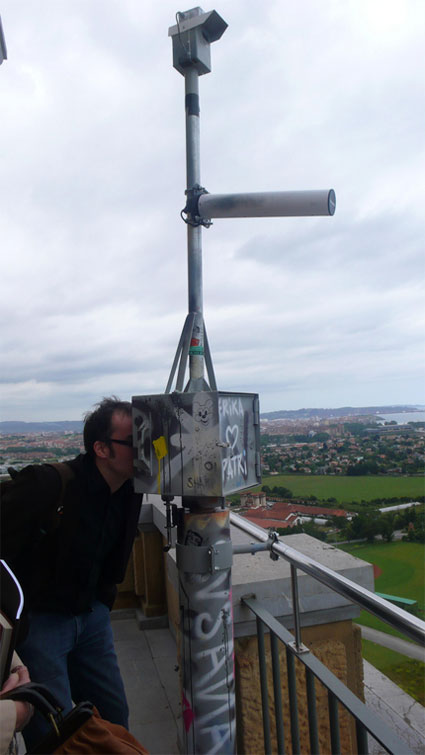
You’ve probably read about Clara Boj and Diego Diaz before, either in some media art catalog or on this blog, i interviewed them a few months ago about their project AR Magic System, their Lalalab studio and their interest for the visualization of wifi networks.
For the LABoral exhibition, the Valencia-based duo developed a sightseeing telescope named Observatorio (Observatory).
Observatorio builds upon Boj and DIaz’ 2004 project Red Libre Red Visible (Free Network, Visible Network) which was born in an optimistic time when it seemed possible to achieve an utopia made of wireless, open communication networks managed by social groups offering services to the local community. At that (not so distant) time, several city governments offered free access to the WiFi network, sometimes in the entire city. The CMT (Telecommunications Market Commission) denounced those city governments for unfair competition with telecom companies, the free wifi municipal projects were canceled, and grassroot groups started installing, maintaining and extending open WiFi networks throughout Spain.
Today, some companies have adopted new tactics based on the deceptive slogan “Share your WiFi”. Companies like FON, and commercial projects such as Whisher and Wefi exploit the current infrastructure of access nodes to the Internet in urban space to provide coverage to the whole city if it were an open, shared structure.
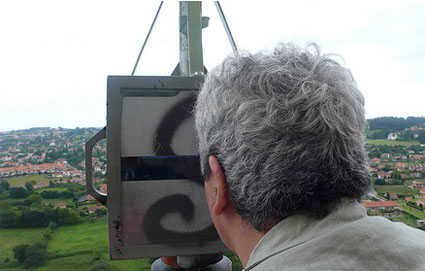 Obervatorio reflects on this scenario by informing viewers about the current state of wireless networks located in the area where the device is installed. The sightseeing telescope, installed on the Laboral tower, tracks and shows where Gijon’s wifi networks are located in real time. You can visualize them on the screen of the telescope, swing it around and see which areas have a denser wifi coverage, and get additional data such as which ones among these networks are open or private. Because Observatorio is programmed to try and connect to any open network available in the area, it can send the information from the observation tower to the exhibition hall, where it is displayed on a big screen. If there is no open networks detected in the area, Observatorio remains separated from the main exhibition space, located in another building. A modification of these networks is also offered, showing an ideal configuration in which the local residents of large areas in the city could gain or share access to it.
Obervatorio reflects on this scenario by informing viewers about the current state of wireless networks located in the area where the device is installed. The sightseeing telescope, installed on the Laboral tower, tracks and shows where Gijon’s wifi networks are located in real time. You can visualize them on the screen of the telescope, swing it around and see which areas have a denser wifi coverage, and get additional data such as which ones among these networks are open or private. Because Observatorio is programmed to try and connect to any open network available in the area, it can send the information from the observation tower to the exhibition hall, where it is displayed on a big screen. If there is no open networks detected in the area, Observatorio remains separated from the main exhibition space, located in another building. A modification of these networks is also offered, showing an ideal configuration in which the local residents of large areas in the city could gain or share access to it.
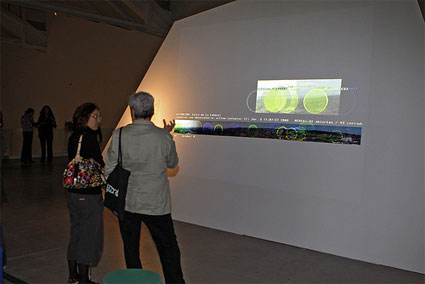 Image courtesy LABoral Centro de Arte y Creación Industrial
Image courtesy LABoral Centro de Arte y Creación Industrial
After having installed Observatorio, the artists discovered many more open nodes than they expected. While testing the project at their studio in Valencia, they couldn’t find more than 5% of open networks. In Gijón the percentage is higher, around 30% in the LABoral area.
From the tower Observatorio can reach theoretically almost the whole city of Gijón. The device comprises a high power uni-directional WiFi antenna with a 30º aperture, able to detect wireless networks within 1 to 4 kilometers depending on the number of obstacles encountered; a video surveillance camera with a telephoto lens with the same aperture as the WiFi antenna; and a viewer which, like a periscope, offers a real time image taken by the camera, with the WiFi networks detected by the antenna placed geographically on it.
Banquete_nodos y redes runs at LAboral Art and Industrial Creation Centre in Gijón, Spain, until November, 03, 2008. The exhibition will then travel to the ZKM | Center for Art and Media in Karlsruhe, March-July 2009.
More sightseeing telescope: The timetravel telescope, the Jurascope and the Elastic time and space telescope.
Also related: Wifi Camera Obscura.

